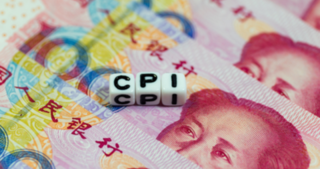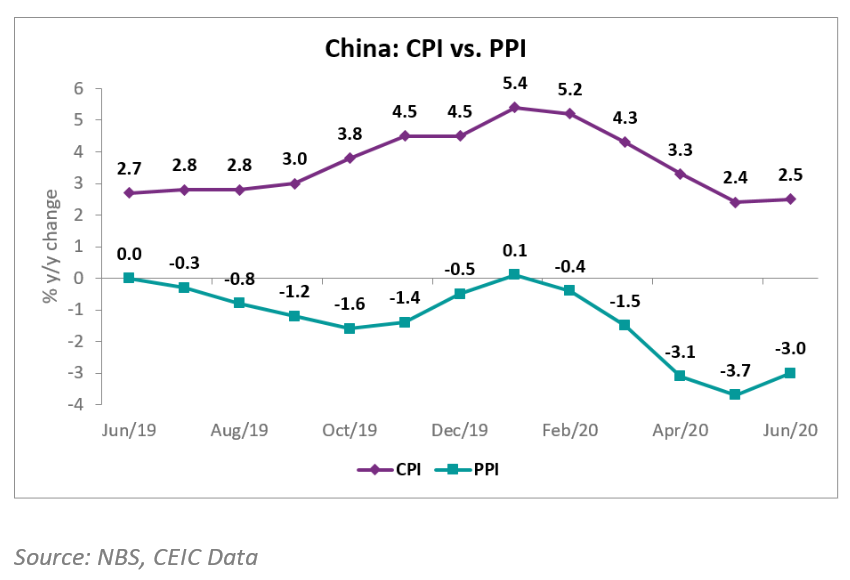Deflationary Pressure of PPI in China is Easing in June


In June 2020, China’s Consumer price index (CPI) grew by 2.5% y/y from 2.4% y/y in the previous month. The Producer price index (PPI) on the other hand dropped by 3.0% y/y, less steep than a 3.7% y/y decline in May. This suggests that the deflationary pressure of PPI is easing.

The CPI increase was mainly a result of the carryover effect from the high pork prices in 2019. The carryover effect accounted for 3.3% y/y of the June figure and new price factor - for -0.8% y/y. In other words, it is the new price factor that suggests the disinflationary pressure is persisting in the CPI. Core inflation, which excludes food and energy prices, decelerated to 0.9% y/y, lower than the figure in May.
The easing disinflationary pressure of PPI was a result of stronger domestic demand in June. The producer goods PPI dropped by 4.2% y/y, less steep than a 5.1% y/y decline in May. Consumer goods PPI grew by 0.6% in June.
Detailed data and analysis on COVID-19 and its economic impact can be found in CEIC’s Coronavirus Data Monitor. For further information on China’s Economy, download the CEIC China Economy in a Snapshot - Q2 2020.